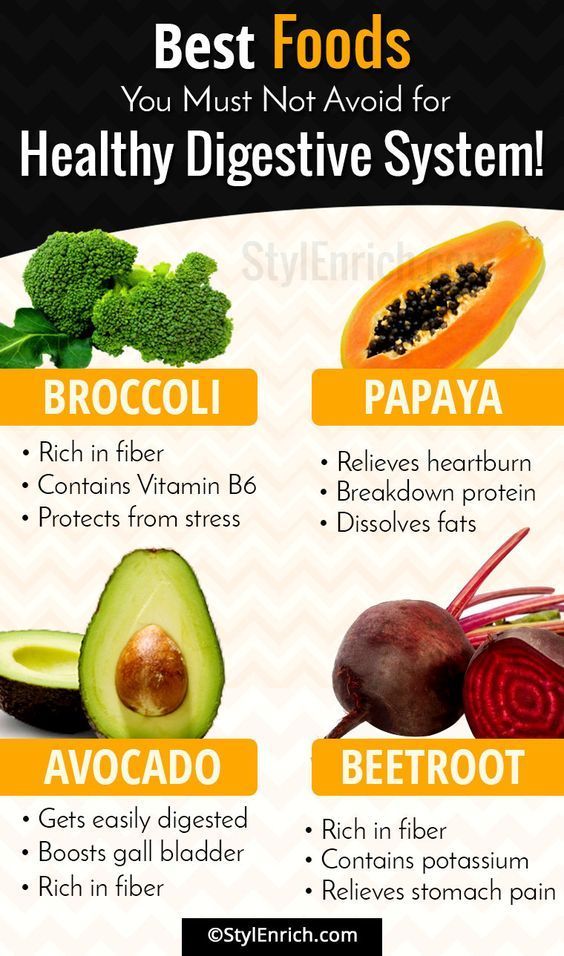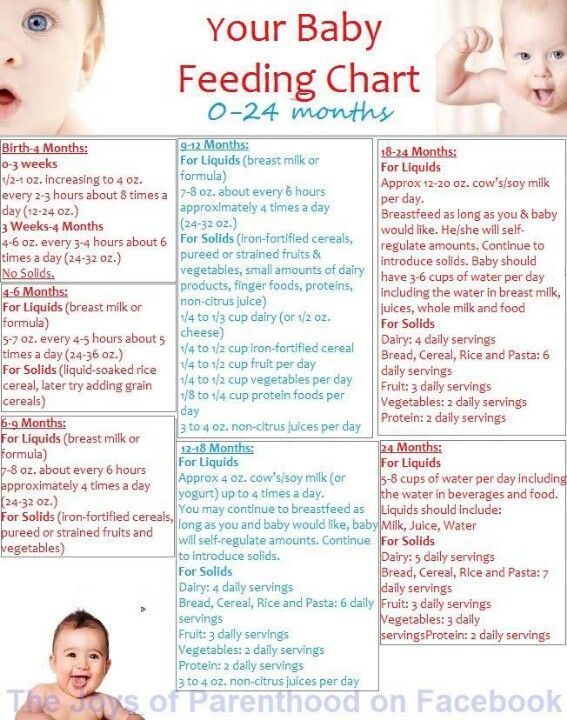My baby feeds for over an hour
Baby Nursing for an Hour and Still Hungry
Is your baby nursing for an hour and still hungry? See what to do when your baby is never satisfied after breastfeeding or nurses constantly.
Your baby never seems satisfied after breastfeeding.
Latching him on is fine, but after nursing 30 minutes on each side, he’s still crying for more. Despite lengthy feedings, he continues searching for your breast and shoving his fingers in his mouth. You’re worried he’s either not getting enough milk, or if he is, why he’s still crying for more.
It’s frustrating seeing him hungry all day, never mind that your nipples are raw and ached from the endless hours of latching him on. You’ve even tried giving a bottle of pumped milk after a long nursing session, where he’ll easily eat two or three more ounces.
He wants to nurse constantly, but falls asleep during a feeding session. When he finally stirs awake, he acts like he’s still hungry after breastfeeding. And when you have two other kids to care for, letting him nurse this long is all but impossible.
When your baby is nursing for an hour and still hungry
I can relate, mama. As a first-time mom, I assumed breastfeeding would be easy and natural. Instead, I faced blistered and bleeding breasts on top of a baby who wanted to breastfeeding constantly. Nursing would take an hour, which made me wonder whether he wasn’t getting enough milk from me.
Once he was finally done, he barely had enough time to be awake before it was time to feed him again. You can imagine why I felt like a milk factory, my baby attached to me 24/7.
I learned that a lengthy feeding session isn’t necessarily a sign that you’re not producing enough milk. Instead, this is your baby’s way of increasing your milk supply—the more you nurse, the more milk you produce.
We also have to remember that newborns have small tummies and that breast milk metabolizes quicker than formula. Those two factors are a recipe for constant nursing, whether in short bursts or, in this case, long sessions.
Still, this doesn’t make hour-long breastfeeding any easier. How do you cope when you feel glued to your baby all the time? Take a look at these tips to help you get through this stage. As these parents said about the article:
“Amazing. This helped me so much. Thank you!!!!” -Beatrice
“Thank you so much for this article because I was feeling like a failure.” -Rae
1. Keep your baby awake during feedings
The biggest culprit for hour-long nursing sessions? It’s likely that your baby is dozing off. Sure, it might look like he’s still nursing, especially when you see his mouth move. But he could simply be sucking to comfort or soothe himself to sleep instead of eating.
This is especially tricky with breastfeeding because you can’t see a decrease in milk the way you can with a bottle. And of course, when you take him off the breast, he cries either because he’s still hungry or he needs to suck to fall asleep.
To avoid this situation, make sure that he stays awake during feedings. Change positions or burp him frequently, or tickle or talk to him while he eats.
Change positions or burp him frequently, or tickle or talk to him while he eats.
Then, make sure he’s actually eating by listening for a swallowing sound and looking for movement in his throat. Even though his mouth is moving, he may not be swallowing milk.
If he’s nursing for comfort, see if you can slip a pacifier in his mouth. This gives you a break while allowing him to comfort suck to sleep.
Even better: feed him after he wakes up, not to fall asleep. This way, he’s not relying on feeding to fall asleep, and is less likely to doze off while eating. Except for the bedtime and middle-of-the-night feeds, nurse him after he wakes up from sleep.
Free download: Do you struggle with getting him to sleep? His awake time just might be affecting how well he sleeps or not. Join my newsletter and grab your copy of One Mistake You’re Making with Your Baby’s Awake Time—at no cost to you.
Discover one mistake you may be making with his awake time. Don’t make the same mistakes I did—help him fall asleep with this one simple trick! Download it below:
Don’t make the same mistakes I did—help him fall asleep with this one simple trick! Download it below:
2. Empty each breast before switching
In the early days, I didn’t know that breast milk came in different stages.
The fore milk is the first to come out, which is more watery and easier to suck. The hind milk follows, and this is creamier, whiter, and fattier. You can see the difference between the two if you pump—the first few ounces are lighter and more watery.
Here’s the thing: the hind milk is more likely to fill up your baby, but if you switch too early to the other breast, he doesn’t get as much of it.
Instead, make sure to drain each breast so that he’s drinking from one side completely before switching to the other. This ensures that he’s getting both sides of the breast and that he’s filling up on his calories.
Get more breastfeeding secrets every mom should know.
3. Expel excess gas
I didn’t realize until later that my baby’s shrieks and cries sometimes had more to do with gas than the need to nurse. What I thought were cries for hungry were actually signs of his discomfort from having gas.
What I thought were cries for hungry were actually signs of his discomfort from having gas.
Before assuming your baby wants to feed some more, try and expel excess gas from his body. You might hold him upright to burp, sit him on your lap and lean him over, or hold him on your forearm, tummy side down.
You can also try to squeeze the gas out in farts by laying him down on his back. Then, gently move his right elbow toward his left knee, as if they were about to touch over his body. Repeat the same with the opposite limbs. This elbow-to-knee trick helped my baby fart a lot of gas that wouldn’t come out in burps.
Get more baby burping tricks that actually work.
4. Take extra care of your breasts
Disclosure: This article contains affiliate links, which means I will earn a commission—at no extra cost to you—if you make a purchase.
With constant nursing sessions, your breasts might not be getting a much-needed break. Still, you can squeeze in proper care so that it’s able to heal when your baby’s not nursing.
Still, you can squeeze in proper care so that it’s able to heal when your baby’s not nursing.
To start, apply lanolin cream (or your own breast milk) on your nipples before and after nursing sessions. This will add an extra layer of protection while you nurse and help your nipples heal after.
Then, try to air dry your breasts whenever possible. You might leave them exposed while you burp your baby, for instance, or take a nap without your top.
If going topless isn’t your thing, you can wear breast shells so that your nipples aren’t rubbing against your clothes. This allows them to heal without contact with your clothes, but still allowing you to stay covered.
Find out when breastfeeding tends to stop hurting for many moms.
Conclusion
Feeling frustrated is normal when your baby is nursing for an hour and still hungry for more. But rest assured mama, this will pass. You’re not doing anything wrong—nor are you destined for sleepless nights and blistered breasts.
Instead, keep your baby awake during feeds to ensure that he’s actually eating. Empty each breast before switching so that he’s drinking the hind milk as well. See if you can expel gas, which is a common reason babies cry.
And lastly, don’t neglect caring for your breasts, as this will make whatever nursing sessions you have more bearable. Now you can make sure that your baby’s getting the milk he needs from breastfeeding—without taking an hour each time.
Get more tips:
- Baby Feeding Every Hour (And Not Sleeping, Either)?
- Newborn Life: Expectation vs Reality
- Newborn Tips and Tricks New Moms Need to Know
- 6 Ways to Handle Your Newborn Constantly Feeding
- How to Survive the 3 Month Old Sleep Regression
Don’t forget: Join my newsletter and grab your copy of One Mistake You’re Making with Your Baby’s Awake Time—at no cost to you:
10 breastfeeding questions answered by a lactation expert
Confused about how long to breastfeed your baby each time? Wondering whether you should put her on a schedule, wait for her to cry, or wake her up? If you're new to breastfeeding, you probably have questions. Lactation expert Kathy Kuhn has the answers.
Lactation expert Kathy Kuhn has the answers.
How often should I breastfeed my baby?
Most babies will breastfeed 8 to 12 times in 24 hours, from their second or third day of life until they are three to six months old. Feedings are not usually spaced evenly around the clock. Most babies will vary the time between feedings and the length of time each feeding takes. The average amount of time a breastfeeding session takes can vary from about 10 minutes to about 45 minutes.
Should I wake my baby for feedings?
For the first few weeks of life, I usually recommend that Mom wake the baby to breastfeed at least every two to three hours, measured from the start of one feeding to the start of the next, during the day and evening hours. It's okay to let the baby take one longer stretch of sleep at night if she is able to do that.
What if my baby wakes before it's time to feed her?
You should not make your baby wait until two to three hours has passed if she is crying or actively sucking on her hands, or otherwise showing interest in breastfeeding.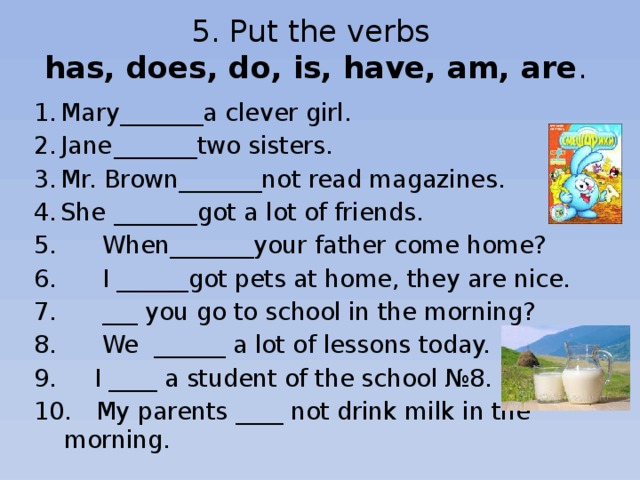 If your baby wants to breastfeed sooner than two hours, it's always appropriate to breastfeed at that time, even if the last feeding just ended a short time ago. You don't need to worry that the breast is "empty"; since your breasts make milk continuously, there's always more milk available for your baby.
If your baby wants to breastfeed sooner than two hours, it's always appropriate to breastfeed at that time, even if the last feeding just ended a short time ago. You don't need to worry that the breast is "empty"; since your breasts make milk continuously, there's always more milk available for your baby.
Should I feed my baby for a certain number of minutes per breast?
Don't remove your baby from the breast. Allow him to tell you when he's done with the first breast. You'll know he's had enough when he removes himself or when he stops sucking for longer than a few minutes. There's no specific amount of time he should spend on each breast. If he wants to take the second breast, that's fine. If not, that's okay too. It's important to allow your baby to determine the end of the feeding to allow him access to the higher fat, creamier milk that usually comes near the end of the session. If you remove the baby after a specific amount of time you may hinder his ability to get enough of the creamier milk.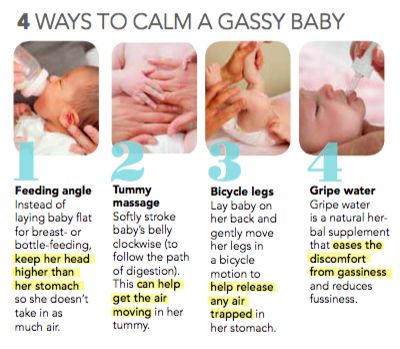
When can I stop waking my baby for feedings?
Once breastfeeding is well established, your baby has been to the pediatrician once or twice and you have been told that she's growing well, you can begin to feed her only when she asks to be fed. You can stop waking her for feedings, if you'd like, as long as she continues to grow well and produce plenty of wet and dirty diapers.
How will I know when my baby wants to breastfeed?
Your baby will "cue" you, or tell you she needs to be fed, by sucking on her hands, making mouthing movements, rooting with her mouth wide open, making little sounds or crying. It's often best to breastfeed when she signals you with the earlier, more subtle feeding cues, rather than waiting for her to cry. Once she's crying, you may find it's harder to get her onto the breast and you may need to calm her first before she can breastfeed.
Why does my baby want to breastfeed so much in the evening?
It's expected and normal for your baby to choose a time when she wants to have very, very frequent feedings. This is commonly called "cluster feeding," during which she typically has long feedings with short breaks between. She might breastfeed almost nonstop for several hours. She may also be fussy or unsettled during cluster feeding time. Understandably, some parents get the wrong idea about this behavior and think that it means Mom has a low milk supply. It's important to remember that the way your baby behaves is not a reliable sign of how much milk she's drinking.
This is commonly called "cluster feeding," during which she typically has long feedings with short breaks between. She might breastfeed almost nonstop for several hours. She may also be fussy or unsettled during cluster feeding time. Understandably, some parents get the wrong idea about this behavior and think that it means Mom has a low milk supply. It's important to remember that the way your baby behaves is not a reliable sign of how much milk she's drinking.
How much should newborns eat?
The most dependable way to judge the milk supply is by your baby's growth pattern and diapers. If she's gaining well then she's getting enough milk, no matter how fussy she might be or how long she might cluster feed in the evening.
On a daily basis, your baby's diapers are the best indicator of whether she's had enough to eat. From age five days up to six to eight weeks, she should have at least five or six sopping wets and three or four palm-sized yellow bowel movements every 24 hours.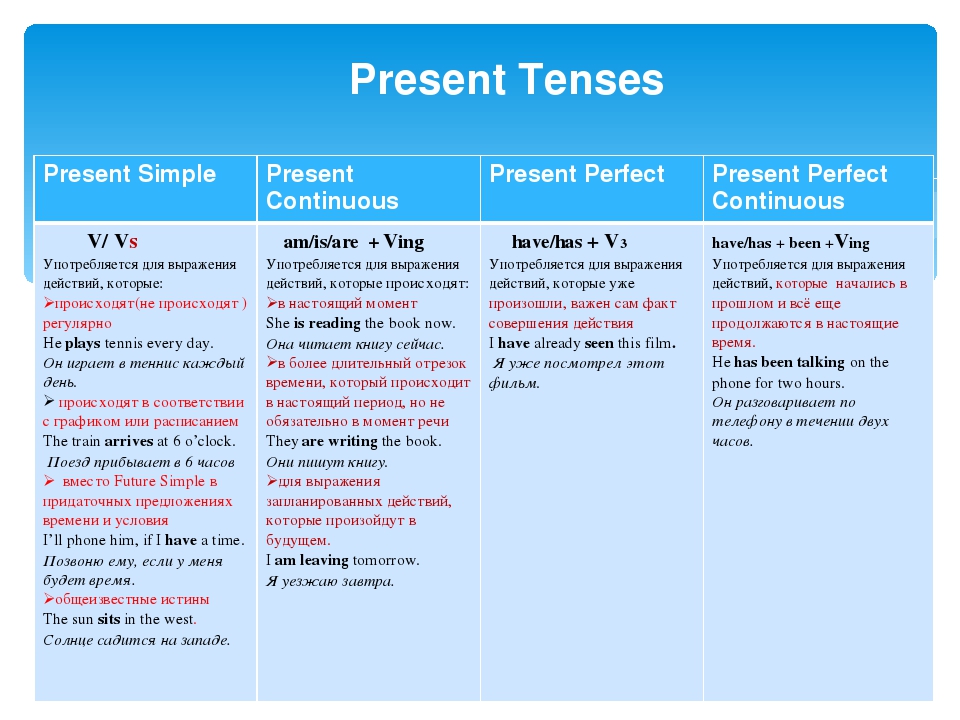 After six to eight weeks, some babies develop a pattern of fewer bowel movements but should continue with at least five or six sopping wets along with a good weight gain.
After six to eight weeks, some babies develop a pattern of fewer bowel movements but should continue with at least five or six sopping wets along with a good weight gain.
Why do breastfed babies vary their feedings so much?
We don't know all the reasons, but it's probably connected to changing fat levels in mother's milk. The amount of fat varies somewhat from feeding to feeding and within each feeding. If some time has passed since the last feeding, the milk at the beginning of the feeding is lower in fat (like skim milk), then it becomes more like whole milk, and then high in fat (like cream) toward the end of the feeding. When feedings are more closely spaced (as in cluster feeding), they're higher in fat. Your baby needs to get this creamy milk to help her grow well, and to help her brain develop. Happily, many babies will take a longer stretch of sleep right after they cluster because getting the creamier milk helps to slow the digestion and makes the baby feel fuller. It's okay to let your baby take this longer stretch of sleep after a cluster. You don't need to wake her up in two to three hours at that time '- just enjoy the break!
It's okay to let your baby take this longer stretch of sleep after a cluster. You don't need to wake her up in two to three hours at that time '- just enjoy the break!
Shouldn't I put my baby on a feeding schedule?
Research indicates that trying to manipulate a baby's natural feeding pattern too much '- especially trying to make her wait longer for the next feeding—can lead to problems like low milk supply and poor weight gain in the baby. The longer between feedings, the greater the signal to the breast to reduce its production of milk. Frequent breastfeeding helps ensure an ample milk supply and good health for your baby. Variety is the spice of life when it comes to breastfeeding patterns! Natural patterns and rhythms will emerge, and you'll get to know your baby exceptionally well by watching her instead of focusing on the clock.
A version of this story originally appeared on iVillage.
Why does the child constantly hang on the chest? ❤️ KIDY.eu
- Not enough milk?
- Temporary crises
- What to do in temporary crises?
“My baby just hung on my chest. I know what to feed demand, but he demands endlessly. What to do?!" - is the most common question to lactation consultants. It turns out that the phrase "the baby is hanging on the chest" means different things for everyone.
I know what to feed demand, but he demands endlessly. What to do?!" - is the most common question to lactation consultants. It turns out that the phrase "the baby is hanging on the chest" means different things for everyone.
It happens that mothers expect that the baby will ask for a breast every 3-4 hours, eat 15 minutes, and sleep the rest of the time. And the requirement of the breast once every 1.5-2 hours, as most newborns do, is alarming. So: if a baby of the first months of life asks for a breast every hour or two and, having received it, eats up to half an hour, then this is not “hanging”, but the normal behavior of the baby. Over time, the baby will begin to ask for breasts less often, but for now you need to wait. For the mother's body, frequent feedings are also useful: they help a good contraction of the uterus, prevent the development of postpartum complications and regulate the total amount of lactation so that the mother does not experience milk stagnation. It happens differently: the baby asks for breasts in 2-3 hours, but, having received it, eats for an hour or even longer. This may be a variant of the norm, but the situation can be improved. Also, carefully look at the general state of affairs with feeding, if the child lives in the rhythm of “an hour I eat - an hour I rest” or spends more time on the chest during the day than without it. nine0012
It happens differently: the baby asks for breasts in 2-3 hours, but, having received it, eats for an hour or even longer. This may be a variant of the norm, but the situation can be improved. Also, carefully look at the general state of affairs with feeding, if the child lives in the rhythm of “an hour I eat - an hour I rest” or spends more time on the chest during the day than without it. nine0012
Not enough milk?
Usually the first thing a mother thinks about is that if a newborn is constantly hanging on her chest, then she does not have enough milk. Absolutely not necessary! But you need to check this version. And only weight gain can reliably show this.
Do not rush to get upset, this can be fixed!
- Have a lactation consultant look at your feeding. He will suggest ways to improve, assess whether supplementary feeding is needed and whether lactation should be stimulated. nine0005
- If a consultant is not available, look for improved attachment to the breast.
 Often this is enough for the breast to begin to be better stimulated to produce milk, and the child to suck out this milk better.
Often this is enough for the breast to begin to be better stimulated to produce milk, and the child to suck out this milk better. - If the baby has gained a kilogram or more in a month, then we are not talking about a lack of milk. Most likely, you can think of a temporary crisis ...
ATTENTION - this is a very important point!
Often mothers are asked to express milk, evaluate breast size, etc. for testing. But these are all very unreliable signs that are different for all women and they don’t talk about the amount of milk. In mothers, the breast reacts differently to pumping, the amount of glandular tissue is different for everyone (in a small breast it can be much more than in a large one, where adipose tissue predominates). The only thing you can really trust is how your baby grows and gains weight. nine0040 For the first 3 months of life, an increase that indicates a sufficient amount of milk - from 500 grams per month or more.
If a child gained 500-700 grams in a month, but he had to hang on his chest for hours, the mother needs to work on organizing breastfeeding, otherwise the situation usually worsens later. If your baby added less than 500 grams, then, alas, he really does not have enough milk.
Temporary crises
These are situations of a sharp increase in breastfeeding or a sharp increase in the duration of feeding. Every nursing mother faces this, it’s just that someone understands what is happening, someone gets scared, and someone simply, out of ignorance, takes steps to stop breastfeeding.
Crises are caused by various reasons:
- Adaptation crisis when new circumstances appear in the baby's life . Usually adaptation crises: the second week of life, moving or going to work, travel. The baby is trying to calm down and regain confidence in her mother's support through more frequent attachments.
 The crisis can also be provoked by internal factors: for example, a child is preparing to fall ill, and through an increase in attachment, his body fights the disease with the healing elements of breast milk. Babies also tend to hang on their chests before any kind of developmental leap (usually new skills, such as crawling or walking). Mom's milk and attention give the baby the strength to conquer new heights. nine0005
The crisis can also be provoked by internal factors: for example, a child is preparing to fall ill, and through an increase in attachment, his body fights the disease with the healing elements of breast milk. Babies also tend to hang on their chests before any kind of developmental leap (usually new skills, such as crawling or walking). Mom's milk and attention give the baby the strength to conquer new heights. nine0005 - Growth spurt crisis . These growth spurts are tied to certain periods of a baby's life: about three weeks, a month and a half, three months, six and nine. During such periods, many children actively grow. For such rapid growth, babies need more nutrition than usual, so they quickly empty their breasts, which gives mothers the impression of “missing milk”. There is actually milk in the chest, just on crisis days the child eats it much more energetically and is ready to constantly ask for breasts, to eat more and more. nine0005
- The most seemingly obvious option to supplement with formula often becomes a “red flag” for the mother’s body: you don’t need so much milk, the child manages anyway.
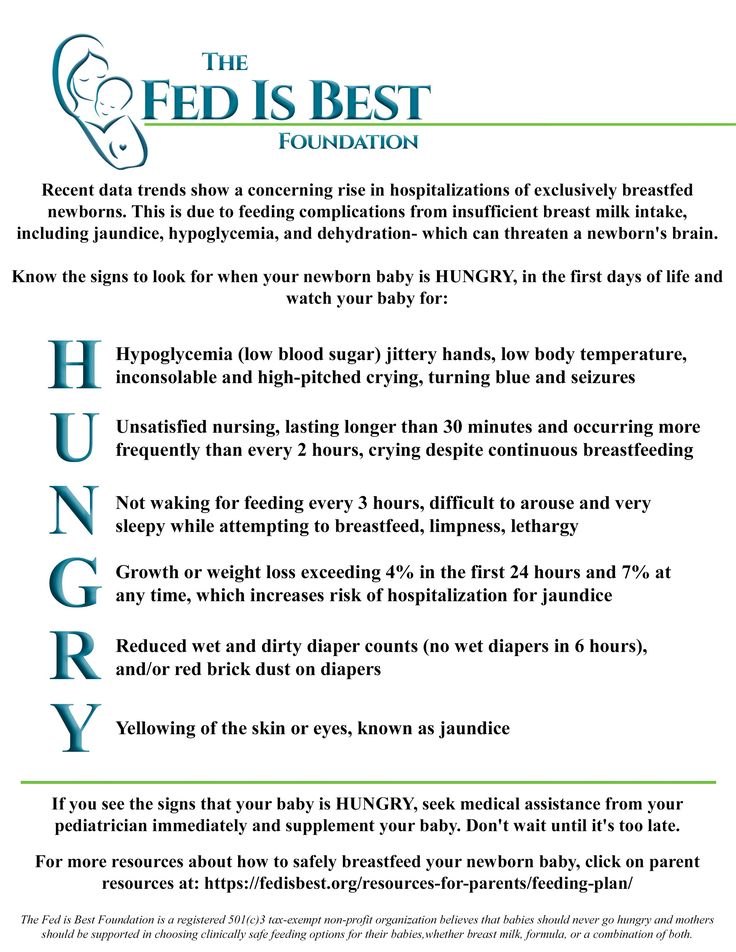 As a result, milk production really begins to decline rapidly.
As a result, milk production really begins to decline rapidly. - In a crisis situation, it is important not to panic, but for a couple of days, literally lie down with the baby in bed and patiently feed, shifting from one breast to another as it is empty. You can drink hot tea, use lactogons, but this is not enough without frequent feedings. And most importantly, crises are a very short-term phenomenon, they rarely last longer than 2-4 days! nine0005
What to change?
Let's go back to the most common situation with "chest hanging": the baby gains weight only slightly above the lower limit (500-700 g in the first three months of life or 400-500 g in the next three months). When, with such increases, the child is applied to the breast every 2-3 hours for about half an hour, this is expected. But if the feedings are more frequent and longer, then sucking is ineffective: the baby sucks out a portion of milk for a very long time, enough to eat.
What to do?
- Adjust breastfeeding to the so-called “asymmetric” .
 When feeding, the breast should be captured deeper from below than from above: the main working parts of the baby's mouth (lower jaw and tongue) are located below, and stimulation from this side should be maximum. This method of application allows the baby to receive milk most efficiently and stimulate the breast to produce new milk.
When feeding, the breast should be captured deeper from below than from above: the main working parts of the baby's mouth (lower jaw and tongue) are located below, and stimulation from this side should be maximum. This method of application allows the baby to receive milk most efficiently and stimulate the breast to produce new milk.
Bring the baby to the breast at such a height that the nipple is at the level of the spout. On the chest, form a crease with the nipple in the middle so that the thumb is on top of the crease and opposite the baby's nose, and the index and other fingers are below, parallel to the baby's lower lip. When a child feels a breast nearby, he reflexively opens his mouth and throws his head back; then the nipple, which was at the level of the nose, will be directly opposite the mouth. And at this moment, the fold from the chest must be directed into the child's mouth, trying to make the nipple point upwards into the sky. If everything is done correctly, then the baby’s head will be slightly tilted up when sucking, the chin will be tightly pressed to the chest, and the nose is either completely free or touches the chest only with the tip.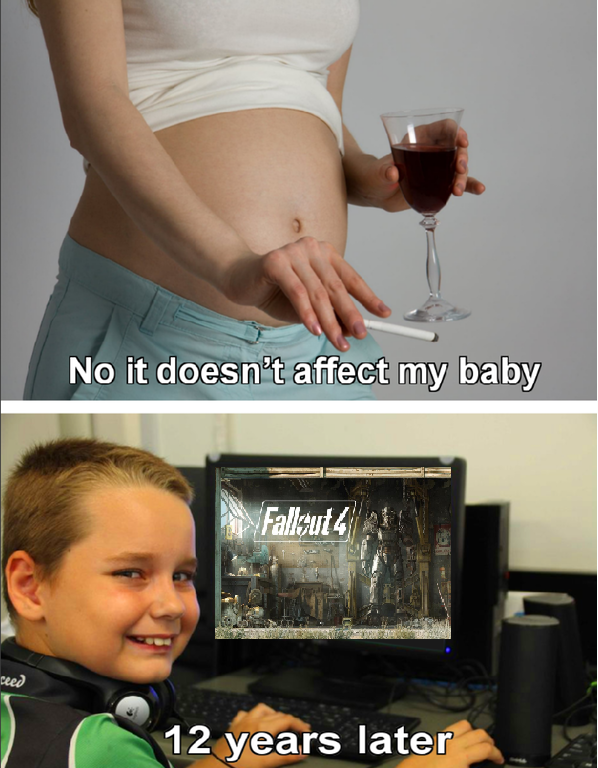 If the chin does not touch the breast, but the nose is pressed into it, then this is just inefficient sucking, in which the baby has to suck for a very long time to eat, and even the nipples can be injured. nine0005
If the chin does not touch the breast, but the nose is pressed into it, then this is just inefficient sucking, in which the baby has to suck for a very long time to eat, and even the nipples can be injured. nine0005 - To increase the amount of milk received per feeding session and reduce the application time, make sure that the feeding is effective . It is a mistake to continue to keep the baby on the chest after he has already emptied it. If the baby has eaten the bulk of the milk from the breast and continues to suck, receiving drop by drop, a teaspoon in five minutes, then it is not surprising that he will not be particularly full after an hour. At the same time, if the mother simply transfers the child to another breast, in the same time the baby will receive a full, good portion of milk and eat much better! nine0040 “But I heard that the breast should not be changed often, otherwise the baby will not receive hindmilk,” mothers object. Alas, this recommendation has created a lot of problems where they could have been avoided: it only applies to situations of excess milk production.
 If the lactation is so profuse that the baby has to swallow the lighter foremilk for a long time and actively before he gets to the fatter hindmilk, this makes sense. But if there is not much milk, then the child eats both the anterior portion and the fatter posterior portion, and after that continues to squeeze the last drops out of the breast for another half an hour, instead of receiving the second same portion from the other breast...
If the lactation is so profuse that the baby has to swallow the lighter foremilk for a long time and actively before he gets to the fatter hindmilk, this makes sense. But if there is not much milk, then the child eats both the anterior portion and the fatter posterior portion, and after that continues to squeeze the last drops out of the breast for another half an hour, instead of receiving the second same portion from the other breast...
Pay attention to the baby's sucking rhythm to help you navigate the timing of the breast change. Forward, more liquid milk flows freely, the baby swallows it quickly and actively. Then the rhythm of the sips slows down, for several sucking movements there is only one swallowing. When the baby has to make 3-4 sucks before swallowing, it means that he has reached fatter and thicker milk.
A little more - and the rhythm is already five or six sucks per sip, the chest is almost empty. At this point, squeeze the breast at the base with one hand, which will squeeze the rest of the fatty hindmilk into the ducts. After the baby swallows a little more actively, but when his throat slows down again, it's time to change the chest. nine0005
After the baby swallows a little more actively, but when his throat slows down again, it's time to change the chest. nine0005
Sometimes during times of crisis, it is necessary to transfer the baby from one breast to another several times during one feeding. But this is more effective and will give the child more benefit than keeping him all this time on one breast. When the baby begins to eat better, you will soon notice that the total feeding time has become shorter, and weight and height gains are better.
And don't hesitate to contact our consultants for help!
4.79 / 5 (votes: 122)
Rate the article:
If you liked our article, share it with your friends:
The child often asks for breasts: how to understand that the child does not have enough milk? | Nutrilak
02/07/2020 149174
Article content
- Breastfeeding at a glance
- Neonatal psychology
- Why is the child hungry
- Changes in appetite
- How to tell if your baby is getting enough milk
- How long should one feeding last
The birth of a baby is a joyful event, but it is also associated with worries and experiences. Especially if the child in the family is the first of the parents, there are many questions that are not so easy to prepare in advance. One of them: “Why does a child often ask for a breast?” nine0012
Especially if the child in the family is the first of the parents, there are many questions that are not so easy to prepare in advance. One of them: “Why does a child often ask for a breast?” nine0012
Briefly about breastfeeding
Mother's milk is the best food for a newborn. It contains in the right proportion important substances for growth, development, and protection against infections. It is always at the right temperature, it does not need to be cooked and thought about storage. In addition, the lactation process adapts to the needs of the baby: the breast produces exactly as much milk as the baby needs. Pediatricians agree that it is not worth restricting a child in breast milk in the first month after birth, and then the baby will form his own feeding regimen. And yet, many mothers are worried if the baby began to ask for breasts more often. Is it related to hunger and lactation disorders? Or is something bothering the child, and in this way he seeks solace? Let's consider these questions in more detail.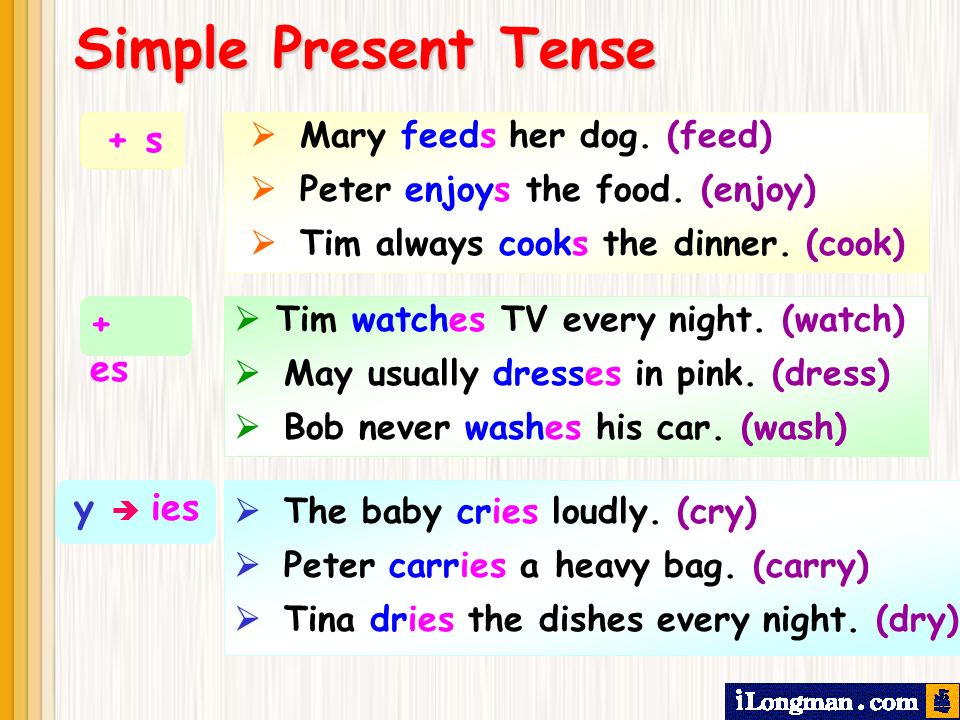 nine0012
nine0012
Psychology of newborns
Breastfeeding is not just a process of satisfying hunger, but also a close psycho-emotional connection between the baby and the mother. In his mind, they continue to remain one, and separation is perceived painfully. Thus, there are 2 main psychological points why a child often asks for breasts:
- The baby is accustomed to the mother's body - it is a familiar environment where it is warm and safe, and the beating of the heart has a calming effect. After birth, the child enters a new world for him, where there are many unfamiliar sounds, smells, and pictures. It is especially difficult to lie alone in a crib, which seems huge when you get used to the pleasant crampedness. The natural desire is to hide. And the most suitable place is under the mother's breast. There is warmth, a familiar smell and a beating heart. And mother's hands create a cozy cradle. nine0005
- The areola around the nipple contains Montgomery's glands, which secrete a secretion that smells like amniotic fluid.
 This smell is familiar, it gives a sense of security and the baby calms down.
This smell is familiar, it gives a sense of security and the baby calms down.
Why is the child hungry
Contact with the mother, of course, is not the only reason why the baby asks for a breast. The natural response to hunger is the desire for breasts. In addition, in infants, the stomach is able to hold a small amount of food, and the process of sucking is difficult for them. Saturated and tired, newborns fall asleep. But the rapid digestion of milk again causes a feeling of hunger. No matter how hard it is for the mother, it is not worth denying the baby the breast, since the subsequent lactation process and the formation of a sufficient amount of milk depend on it. Including night feedings are very important, since from 3 to 8 in the morning more of the hormone prolactin is produced, which contributes to the production of milk. But if the child began to often ask for breasts, the mother begins to worry about whether he has enough food and whether everything is in order with lactation. Let's analyze the possible reasons for such a famine: nine0012
Let's analyze the possible reasons for such a famine: nine0012
- baby only eats foremilk. And it actually quenches thirst. Back milk is more fatty, it is it that brings saturation;
- the baby does not latch on properly. It is very important from the very beginning to monitor how the baby captures the areola of the nipple. How to check: the baby's mouth is wide open, the lips are turned out, the tongue lies under the areola, the nipple is deep (at the base of the tongue), the tip of the nose and chin are pressed to the chest;
- mother's lack of milk. Such a problem can occur for various reasons (malnutrition, stress, illness, etc.), but it is important to seek help from a specialist in time and start taking action. nine0005
3 more reasons why a child may ask for a breast. At the same time, the mother may think that he is hungry, but in fact the baby has:
- the sleep mode has gone wrong. Often a child needs a breast not to satisfy hunger and thirst, but to calm down and fall asleep;
- problems with the tummy.
 Gas and colic are a common problem in babies. Experiencing pain and discomfort, the baby seeks to calm himself in the usual way and asks for a breast; nine0005
Gas and colic are a common problem in babies. Experiencing pain and discomfort, the baby seeks to calm himself in the usual way and asks for a breast; nine0005
- activity has changed during the day. Experts believe that regardless of the type of feeding, babies behave more restlessly in the afternoon.
Appetite changes
In the first year of life, the child grows very quickly. Changes in his body are also reflected in his appetite: it can change in certain periods.
Lactation crisis . During this period, the woman's body adapts to the needs of the baby. If there was even a short break in feeding, then the volume of milk decreases slightly. Because of this, the child may experience a feeling of hunger. That's why he starts asking for breasts more often. nine0012
Growth spurts . The child grows either faster or slower, which is reflected in the appetite. During such periods, there is the greatest hunger and frequent demand for breasts.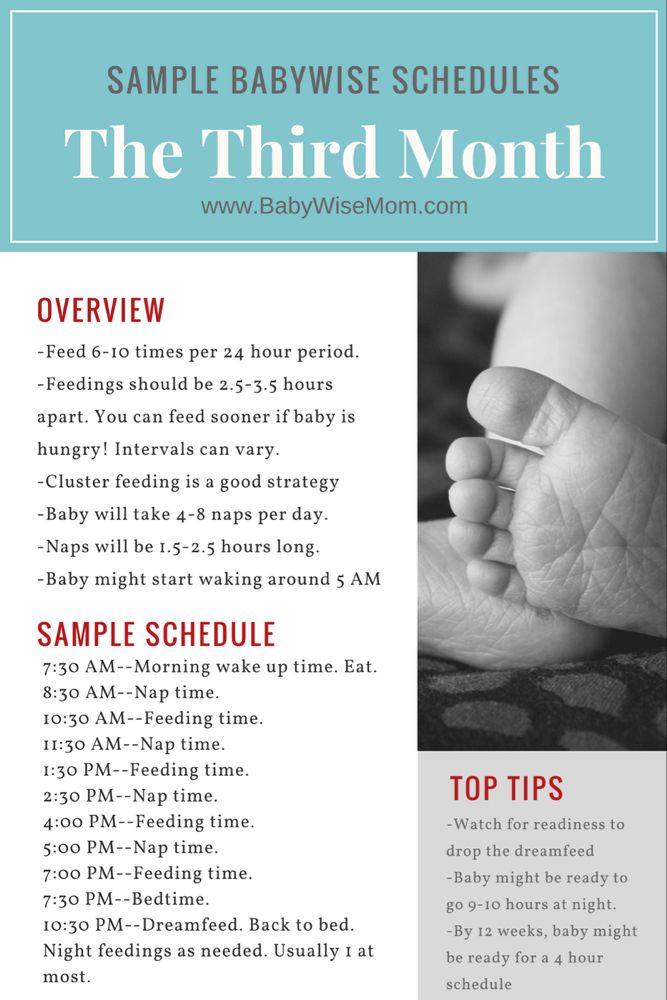 To deny the baby in his natural needs is not worth it.
To deny the baby in his natural needs is not worth it.
How to tell if your baby is getting enough milk
In the first days after birth, the baby eats an average of up to 30 ml of mother's milk per feeding. It’s not scary if he ate more one time and less the next, most likely he will just ask for the breast again faster. As a rule, with a normal feeding regimen and a sufficient amount of milk from the mother, by the age of one month, the weight of the child increases by 500-600 g. And yet, how to understand that the child has enough milk? There are 2 easy ways to do this. nine0012
Wet diaper test . Calculating the daily number of acts of urination and defecation of the crumbs allows you to give a very clear answer to the question of whether the baby has enough food. The age of newborns in a certain way affects the number of "going to the toilet." So, in 3-4 weeks of life, children walk "in a small way" 20-25 times a day. When using diapers, it is very difficult to follow this. Therefore, for a while they will have to be abandoned in favor of diapers. If the baby urinates 20-25 times, and at the age of 6 months to 1 year - 15-16 times, then his mother's milk is enough for him. Reducing the number of urination to 8-10 times a day suggests that the production of breast milk in a woman has decreased. And if there are less than 6 used diapers, this is a clear sign that the baby does not have enough mother's food. In this case, it is necessary to urgently consult with a pediatrician. nine0012
Therefore, for a while they will have to be abandoned in favor of diapers. If the baby urinates 20-25 times, and at the age of 6 months to 1 year - 15-16 times, then his mother's milk is enough for him. Reducing the number of urination to 8-10 times a day suggests that the production of breast milk in a woman has decreased. And if there are less than 6 used diapers, this is a clear sign that the baby does not have enough mother's food. In this case, it is necessary to urgently consult with a pediatrician. nine0012
Weighing. To control the amount eaten, many mothers buy special baby scales. How to use them correctly? To do this, take a sheet of paper, draw a table on it. The first column is the time, the second is the weight before feeding, the third is the weight after eating. Next, you need to weigh the hungry baby, write down the data and attach it to the chest. After feeding, also record the weighing information in the table.
nine0148 How long should one feeding last The answer to this question is purely individual and depends only on the baby himself, because each crumb already has its own character.









